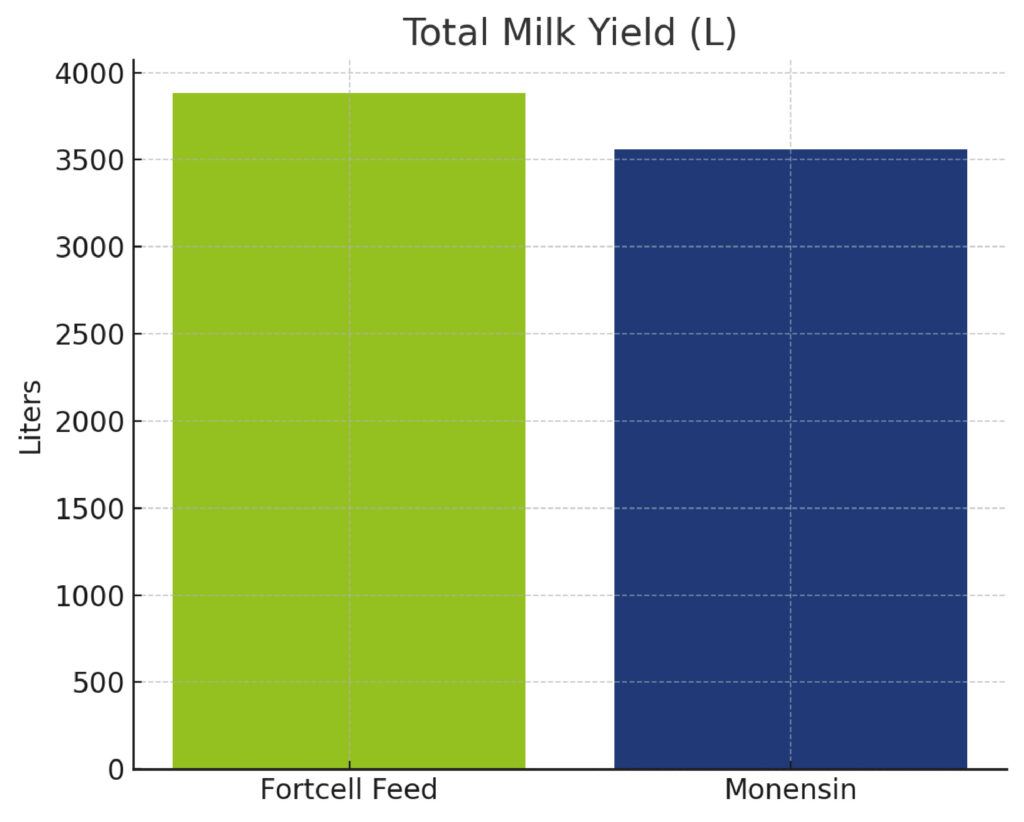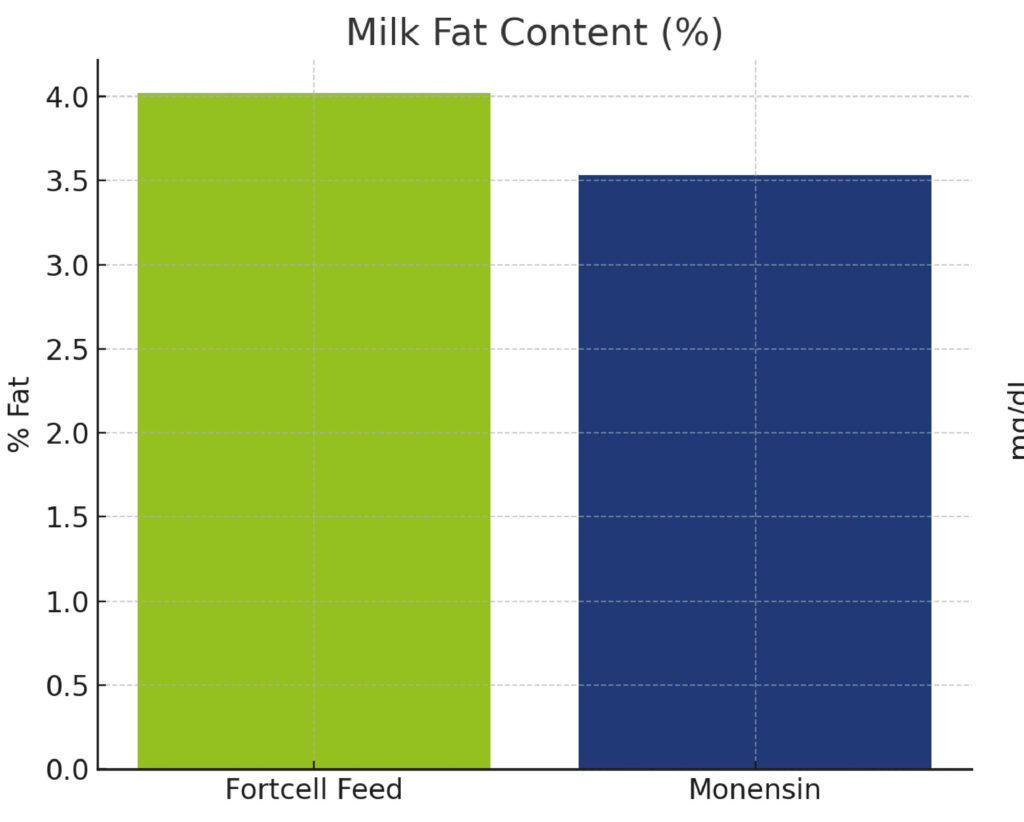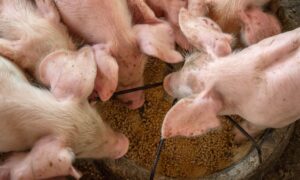In milk production, every liter counts. That’s why, when we talk about efficiency, rumen health, and product quality, even small changes in diet can make a big difference. In this article, we share the results of a study conducted under real farm conditions, comparing the effect of Fortcell Feed® Livestock—a multi-strain microencapsulated probiotic—with traditional monensin sodium, widely used in bovine production systems.
What was evaluated?
The study was conducted over 300 days on a dairy farm in the high tropics of Antioquia (Colombia), with 20 cows divided into two groups: one fed with Fortcell Feed® and the other with monensin, both receiving equivalent diets. The following parameters were measured:
- Daily milk production
- Fat and protein percentages
- MUN levels (milk urea nitrogen), an indicator of nitrogen metabolism
Results
+9% in milk production:
The group that received Fortcell Feed® produced 321 liters more per lactation, compared to the group that received monensin.

+13.88% in milk fat content:
The fat percentage was significantly higher with Fortcell Feed® (4.02%) versus monensin (3.53%).

Better nitrogen balance:
MUN levels were 12.65% lower with Fortcell Feed®, suggesting more efficient nitrogen utilization by the animal and reduced waste.

What does this mean for the producer?
Greater profitability: More milk, better composition, without increasing dietary costs.
Greater sustainability: Lower nitrogen excretion, reduced environmental impact.
Better animal health: Optimal MUN levels are linked to lower risk of reproductive and digestive disorders.
This study reinforces what many producers are already seeing in the field: multi-strain probiotics like Fortcell Feed® are not only an alternative to monensin but an effective tool to improve productive efficiency, intestinal health, and the sustainability of dairy systems.
Visit our research page or contact us for more information.






